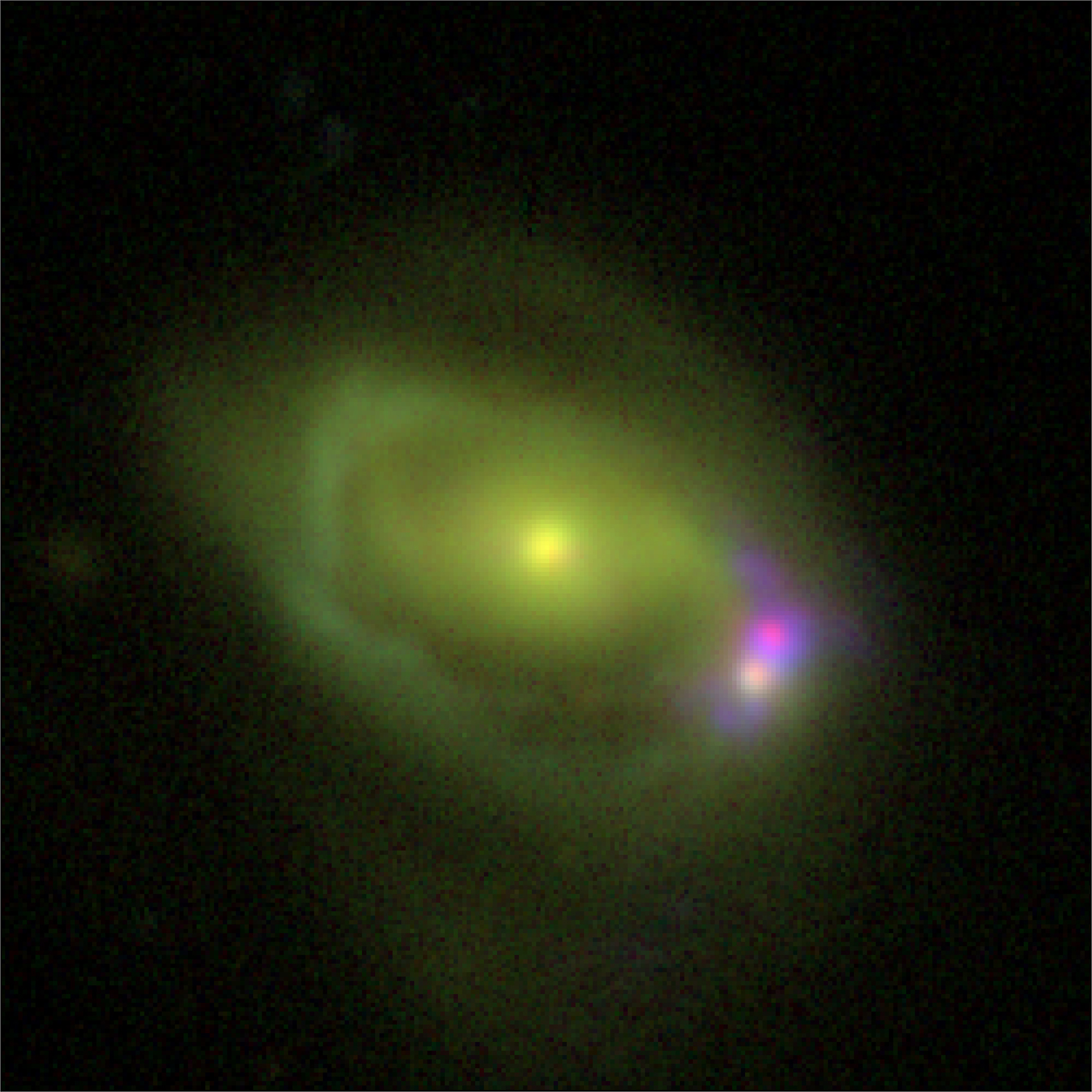Powerful Black Hole Found Within Unconventional Galaxy Merger

An incredibly powerful supermassive black hole has been found at the center of a tiny galaxy that is merging with another larger galaxy, a new study shows.
NASA's Nuclear Spectroscopic Telescope Array (NuSTAR) has imaged a system known as Was 49. The system consists of a large disk galaxy called Was 49a that is colliding with a smaller dwarf galaxy called Was 49b, located about 26,000 light-years from the larger galaxy’s center.
Data from the NuSTAR mission, along with information from the Sloan Digital Sky Survey and the Discovery Channel Telescope in Arizona, show luminous, high-energy X-rays shooting out from 49b’s galactic core, suggesting it hosts an active supermassive black hole that comprises more than 2 percent of the galaxy's entire mass, scientists say. [When Galaxies Collide: Photos of Great Galactic Crashes]
"This is a completely unique system and runs contrary to what we understand of galaxy mergers," Nathan Secrest, lead author of the study and postdoctoral fellow at the U.S. Naval Research Laboratory in Washington, D.C., said in a statement from NASA. "We didn't think that dwarf galaxies hosted supermassive black holes this big. This black hole could be hundreds of times more massive than what we would expect for a galaxy of this size, depending on how the galaxy evolved in relation to other galaxies."
The powerful bursts of high-energy radiation emitted from dwarf galaxy 49b are fueled by the gas and dust being gobbled up by the black hole. Normally, however, it is the larger of two merging galaxies that hosts the active supermassive black hole, according to the NASA statement.
"That is because, as galaxies approach each other, their gravitational interactions create a torque that funnels gas into the larger galaxy's central black hole," NASA officials said. "But in this case, the smaller galaxy hosts a more luminous AGN [active galactic nucleus] with a more active supermassive black hole, and the larger galaxy's central black hole is relatively quiet."
The pink-colored emissions captured in the image represent the gas and dust surrounding the active supermassive black hole, while the large green cloud represents the starlight of Was 49a. Although scientists have yet to determine how the supermassive black hole of 49b grew to be so big, they expect that it will collide with the dormant black hole of 49a in several hundred million years to form one ginormous galactic beast, according to the NASA statement.
Breaking space news, the latest updates on rocket launches, skywatching events and more!
"This study is important because it may give new insight into how supermassive black holes form and grow in such systems," Secrest said in the statement. "By examining systems like this, we may find clues as to how our own galaxy's supermassive black hole formed."
Follow Samantha Mathewson @Sam_Ashley13. Follow us @Spacedotcom, Facebook and Google+. Original article on Space.com.

Samantha Mathewson joined Space.com as an intern in the summer of 2016. She received a B.A. in Journalism and Environmental Science at the University of New Haven, in Connecticut. Previously, her work has been published in Nature World News. When not writing or reading about science, Samantha enjoys traveling to new places and taking photos! You can follow her on Twitter @Sam_Ashley13.
